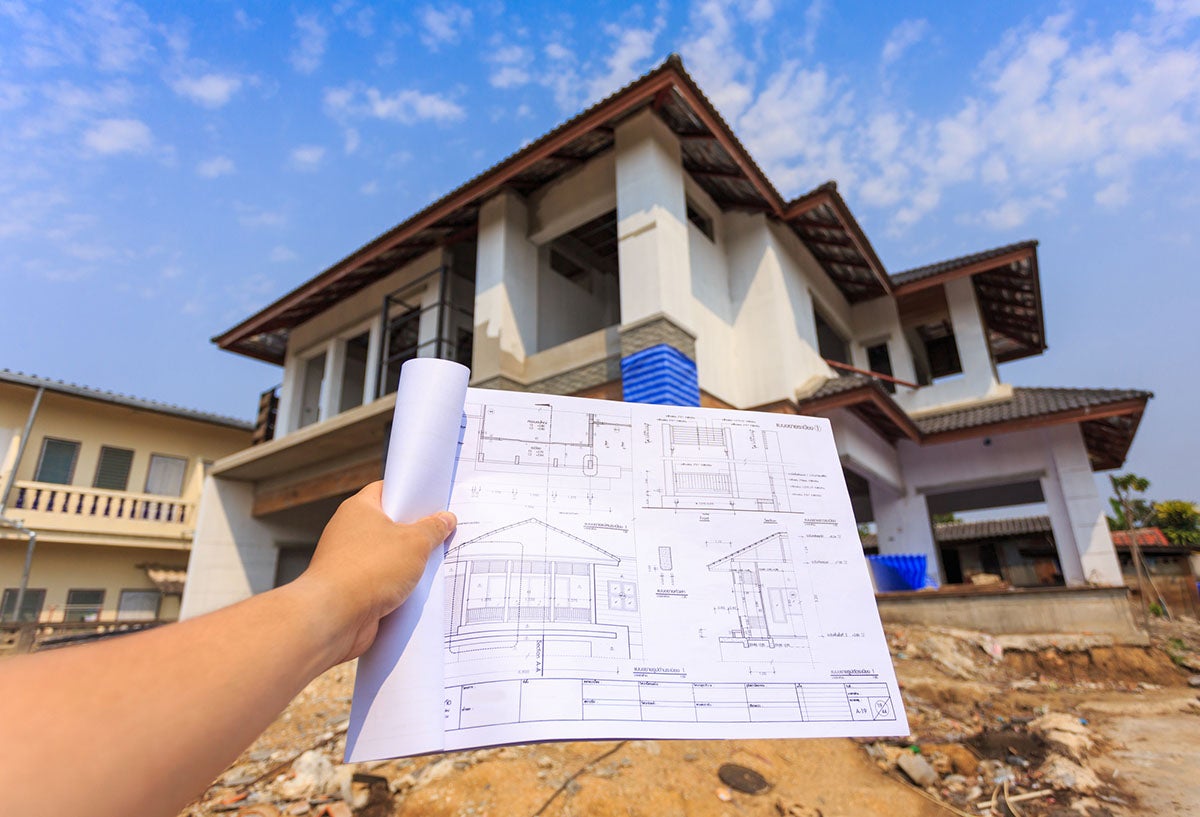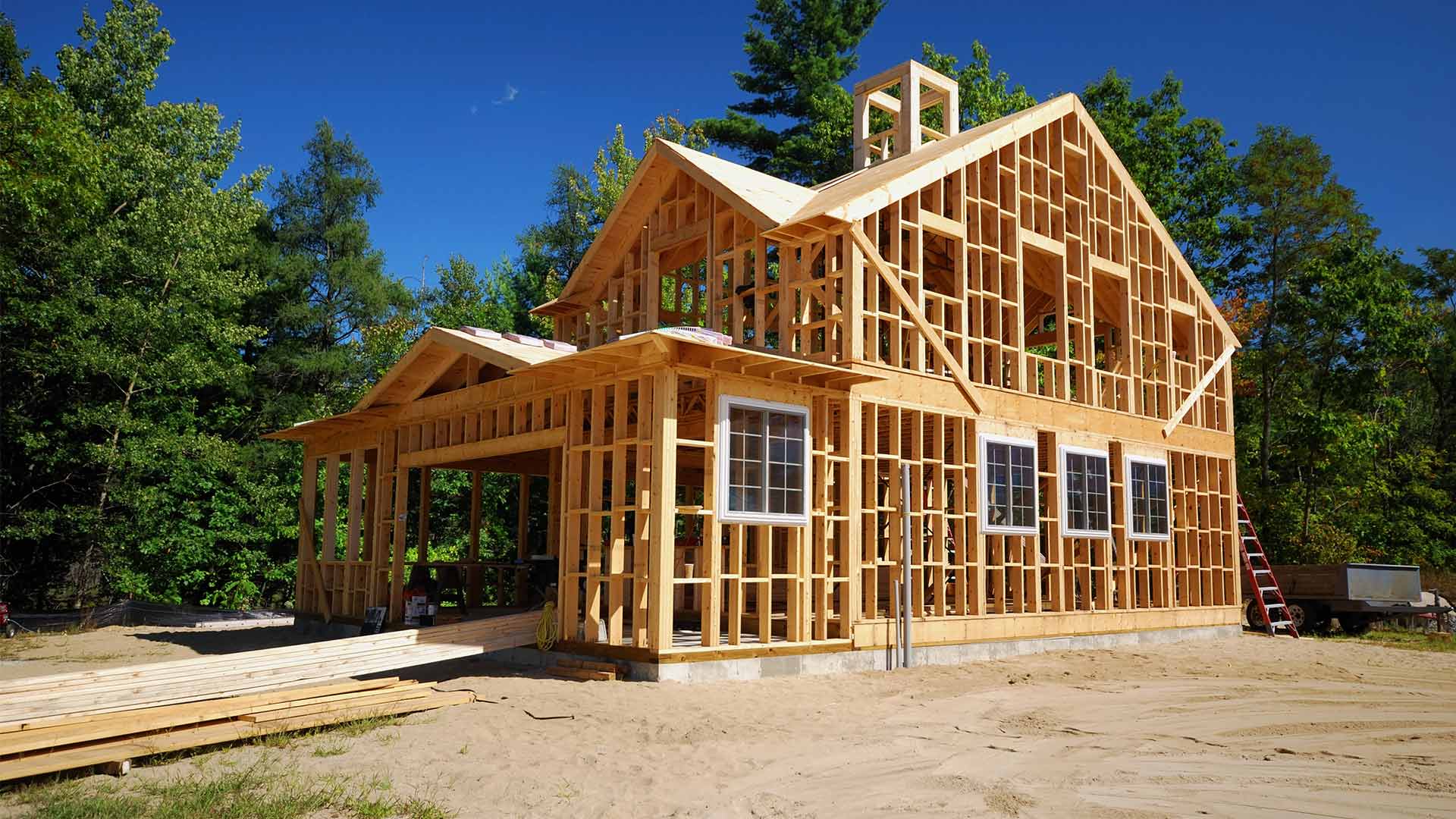Home>diy>Building & Construction>How Is Construction Loan Interest Calculated


Building & Construction
How Is Construction Loan Interest Calculated
Modified: January 24, 2024
Learn how construction loan interest is calculated for building construction projects. Explore the factors that affect interest rates and find ways to minimize costs.
(Many of the links in this article redirect to a specific reviewed product. Your purchase of these products through affiliate links helps to generate commission for Storables.com, at no extra cost. Learn more)
Introduction
Welcome to the world of construction loans! If you’re planning to build your dream home or embark on a large-scale construction project, you may find yourself in need of a construction loan. These loans provide the necessary funds to cover the costs of materials, labor, permits, and other expenses associated with the construction process.
However, understanding how construction loans work and how the interest is calculated can be daunting. That’s why we’re here to guide you through the intricacies of construction loan interest.
In this article, we will break down the basics of construction loans and explain how interest is calculated. We will also discuss the various factors that can affect construction loan interest rates. Lastly, we will walk you through an example calculation and provide some tips on how to effectively manage construction loan interest.
So, let’s dive in and demystify the world of construction loan interest!
Key Takeaways:
- Construction loan interest is calculated based on the outstanding balance and can be simple or compound. Factors like loan amount, credit score, and location can affect interest rates.
- Effective management of construction loan interest involves careful budget planning, prepayment options, and maintaining good communication with the lender. Monitoring interest rate fluctuations and keeping accurate records are also essential.
Read more: How To Calculate Construction Loan Interest
Understanding Construction Loans
Before we delve into the details of construction loan interest, it’s important to have a solid understanding of what construction loans are and how they differ from traditional home loans.
Unlike a standard mortgage loan used to purchase an already-built home, a construction loan is specifically designed to finance the construction of a new property or the renovation of an existing one. This type of loan provides the necessary funds to cover the various stages of the construction process, such as purchasing land, obtaining permits, and hiring contractors.
Construction loans differ from traditional loans in several key ways:
- Draw Schedule: Instead of providing the full loan amount upfront, construction loans are typically disbursed in a series of payments, known as draws, based on a pre-determined draw schedule. These payments are made at different stages of the construction project, ensuring that the funds are utilized efficiently and according to the project timeline.
- Short-term Nature: Construction loans are usually short-term loans, with terms that typically range from six months to two years. Once the construction is completed, the loan is often converted into a traditional mortgage loan.
- Higher Interest Rates: Construction loans generally carry higher interest rates compared to traditional mortgage loans. This is because construction projects are considered riskier for lenders due to the uncertainties and potential delays associated with the construction process.
Understanding these key differences is essential when considering a construction loan. Now that you have a grasp of the fundamentals, let’s explore how construction loan interest is calculated.
The Basics of Construction Loan Interest
Construction loan interest is the cost you pay to borrow money for your construction project. It is typically calculated based on the outstanding balance of your loan and is expressed as a percentage of that balance.
Unlike a traditional mortgage where interest begins accruing immediately after the loan is taken out, construction loan interest is generally only charged on the funds that have been disbursed. This means that as each draw payment is made, interest starts accumulating on the amount that has been paid out.
Construction loan interest can be calculated using either simple interest or compound interest. Simple interest is calculated based on the initial loan amount, while compound interest takes into account the accrued interest on a regular basis.
Another important aspect to consider is how the interest is repaid. In some cases, you may have the option to make interest-only payments during the construction phase, with the principal amount to be paid after the construction is completed. This can help alleviate some financial burden during the construction phase.
It’s important to note that construction loan interest rates are typically higher than those for traditional mortgage loans. This is due to the increased risk associated with construction projects. Lenders factor in the potential delays, cost overruns, and other unforeseen circumstances that can arise during the construction process.
Now that you have a basic understanding of construction loan interest, let’s explore the factors that can affect the interest rates.
Factors Affecting Construction Loan Interest
When it comes to construction loan interest rates, several factors can influence the final rate you’ll be offered. Understanding these factors can help you navigate the loan process more effectively and potentially secure a more favorable interest rate.
- Loan Amount: The size of your loan can have a significant impact on the interest rate. Generally, higher loan amounts may come with higher interest rates as they involve greater risk for lenders.
- Credit Score: Your credit score plays a crucial role in determining the interest rate you’ll be offered. A higher credit score demonstrates your creditworthiness and could result in a lower interest rate.
- Loan-to-Value Ratio: The loan-to-value (LTV) ratio represents the loan amount in relation to the appraised value of the property. A lower LTV ratio, indicating a smaller loan compared to the property’s value, can lead to a more favorable interest rate.
- Builder’s Experience and Track Record: Lenders may consider the experience and track record of the builder or contractor involved in your project. A reputable and experienced builder can inspire confidence in lenders and potentially lead to more favorable loan terms.
- Location and Market Conditions: Local market conditions and the location of your construction project can also impact the interest rate. Factors such as supply and demand, economic stability, and property values in the area can influence the rates offered by lenders.
- Down Payment: The size of your down payment can affect the interest rate. A larger down payment shows a higher level of commitment and reduces the risk for lenders, potentially resulting in a lower interest rate.
- Loan Term: The duration of the loan can impact the interest rate as well. Shorter-term loans may come with higher interest rates, while longer-term loans may have slightly lower rates.
Keep in mind that these factors can vary between lenders, and it’s important to explore multiple options and shop around for the best rates and terms.
In the next section, we’ll discuss the different methods used to calculate construction loan interest.
Construction loan interest is typically calculated based on the outstanding balance of the loan. The interest is usually charged monthly and is based on the current interest rate and the amount of the loan that has not been repaid. Be sure to understand how your lender calculates and charges interest to avoid any surprises.
Methods of Calculating Construction Loan Interest
Construction loan interest can be calculated using different methods, each with its own implications for borrowers. The two widely used methods are the simple interest method and the interest reserve method.
Simple Interest Method:
Under the simple interest method, interest is calculated based on the outstanding loan balance. As each draw payment is made, interest starts accruing on the amount that has been disbursed. This means that you only pay interest on the portion of the loan that has been utilized.
This method can offer more flexibility, as you have the option to make interest-only payments during the construction phase. This helps manage your cash flow during the construction process when expenses such as materials and labor are ongoing.
Interest Reserve Method:
The interest reserve method is slightly different. Instead of paying interest as each draw is made, the interest payments are pre-funded at the beginning of the loan and held in an escrow account or interest reserve. These payments are made periodically during the construction phase.
With this method, the interest is calculated on the total loan amount from the beginning, not just on the disbursed funds. This means you will be paying interest on the full loan amount, including the funds in the interest reserve.
The interest reserve method can provide more stability and predictability, as your interest payments are already taken care of upfront. However, keep in mind that this method may require a larger down payment or additional financial resources to cover the interest reserve.
It’s essential to discuss and understand which method your lender employs and how it will affect your loan structure and repayment plan. Each method has its advantages and considerations, and it’s important to choose the one that aligns with your financial needs and goals.
Now, let’s walk through an example to illustrate how construction loan interest is calculated in practice.
Example of Construction Loan Interest Calculation
To better understand how construction loan interest is calculated, let’s consider a hypothetical construction project.
Imagine you have taken out a construction loan of $200,000 to build a new home. The loan term is one year, and the interest rate is 5%. The interest is calculated using the simple interest method.
During the construction process, the loan is drawn in four stages, each with a specific disbursement amount:
- Stage 1: $50,000
- Stage 2: $50,000
- Stage 3: $50,000
- Stage 4: $50,000
To calculate the interest for each stage, you need to determine the amount of time that elapses between each draw. Let’s assume that each stage takes three months to complete.
Using the simple interest formula:
Interest = Principal x Rate x Time
For Stage 1, the interest calculation would be: Interest = $50,000 x 0.05 x (3/12) = $625.
For Stage 2, the interest calculation would be: Interest = $100,000 x 0.05 x (3/12) = $1,250.
For Stage 3, the interest calculation would be: Interest = $150,000 x 0.05 x (3/12) = $1,875.
For Stage 4, the interest calculation would be: Interest = $200,000 x 0.05 x (3/12) = $2,500.
Adding up the interest for each stage, you would have a total interest payment of $6,250 for the one-year construction period.
Remember that this is a simplified example, and actual interest calculations can be more complex, depending on the terms of your loan and the specific draw schedule.
Now that you have an understanding of how construction loan interest is calculated, let’s move on to some tips for managing construction loan interest effectively.
Tips for Managing Construction Loan Interest
Managing construction loan interest effectively is crucial to ensure that your project stays within budget and minimize financial strain. Here are some helpful tips to keep in mind:
- Plan Your Budget Carefully: Before starting the construction project, create a detailed budget that includes all potential expenses. This will help you determine the exact loan amount needed, reducing the risk of borrowing more than necessary.
- Consider Prepayment Options: If you have the financial means, consider making early payments or prepayments towards the principal balance. This will reduce the outstanding loan amount and, as a result, lower the amount of interest paid over the loan term.
- Negotiate Favorable Loan Terms: Shop around and compare offers from different lenders to secure the most favorable loan terms, including interest rates and loan fees. Don’t be afraid to negotiate with lenders to achieve a better deal.
- Maintain Good Communication: Stay in regular communication with your lender throughout the construction process. Keep them updated on the progress of the project and any changes or delays that may occur. This will help establish a good working relationship and ensure that the loan disbursements are smooth and timely.
- Minimize Construction Delays: Construction delays can increase the duration of the loan, resulting in more interest payments. To mitigate this, work with reliable contractors, regularly review the construction timeline, and proactively address any issues that may arise during the project.
- Monitor Interest Rate Fluctuations: Construction loan interest rates can sometimes fluctuate. Stay informed about prevailing market conditions and consider locking in your interest rate when it’s favorable. This can protect you from potential rate increases during the construction period.
- Keep Accurate Records: Maintain organized records of all construction-related expenses. This will help you accurately track the amount disbursed, the interest accrued, and provide necessary documentation for tax purposes.
By implementing these strategies, you can effectively manage construction loan interest and potentially save money in the long run.
Now, let’s wrap up and summarize what we’ve covered so far.
Conclusion
Construction loans play a vital role in financing the construction of new homes or renovation projects. Understanding how construction loan interest is calculated can help you make informed decisions and effectively manage the financial aspects of your construction project.
We have explored the basics of construction loan interest, including the differences between construction loans and traditional mortgages. We discussed the factors that can affect construction loan interest rates, such as loan amount, credit score, and location. Additionally, we examined the two common methods used for calculating construction loan interest: the simple interest method and the interest reserve method.
Furthermore, we provided an example to illustrate how construction loan interest is calculated in practice and shared some valuable tips for managing construction loan interest effectively. By carefully planning your budget, considering prepayment options, and maintaining open communication with your lender, you can navigate the construction loan process with confidence.
Remember, each construction loan is unique, and it is essential to consult with your lender to understand the specific terms, conditions, and repayment structure of your loan.
We hope this article has provided you with valuable insights into construction loan interest calculation and management. By applying the knowledge and tips shared, you can ensure a successful and financially sound construction project.
Good luck with your construction endeavor, and may your new home or renovation project bring you joy and fulfillment!
Frequently Asked Questions about How Is Construction Loan Interest Calculated
Was this page helpful?
At Storables.com, we guarantee accurate and reliable information. Our content, validated by Expert Board Contributors, is crafted following stringent Editorial Policies. We're committed to providing you with well-researched, expert-backed insights for all your informational needs.















0 thoughts on “How Is Construction Loan Interest Calculated”